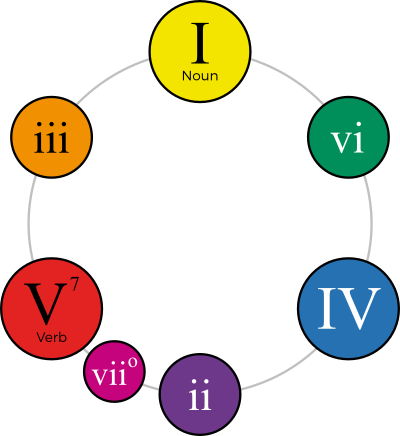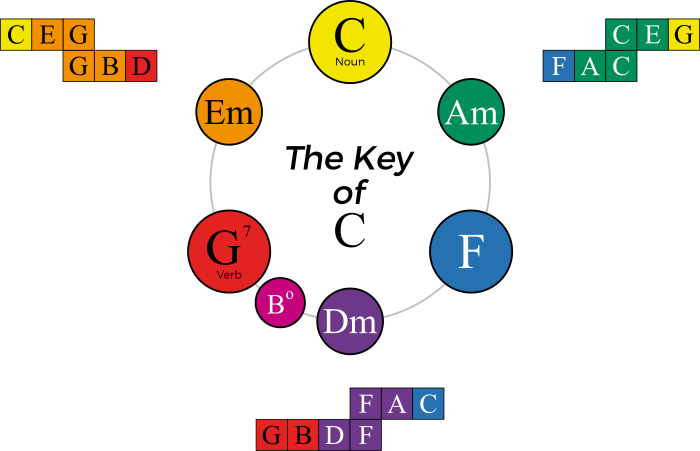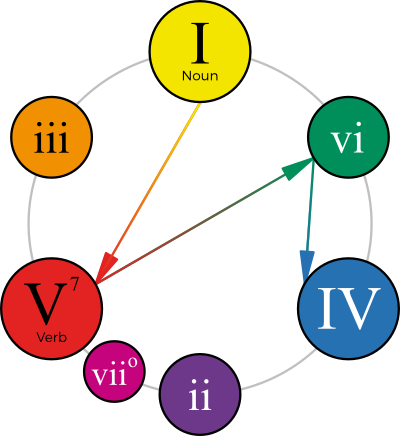Back • Return Home
Memorizing Chord Progressions
Donna Cercone has come up with an absolutely brilliant way of memorizing Chords and Chord Progressions. To explain...
The color wheel has three "Primary Colors" (Yellow, Red, Blue) and three "Secondary Colors" (Purple, Orange, Green).
Funnily enough, the Diatonic Chords (i.e.: those within the same Key) are named in a similar fashion. There are "Primary Chords" (the Major Chords represented by the upper-case Roman Numerals I, IV, and V), as well as "Secondary Chords" (the minor Chords represented by the lower-case Roman Numerals ii, iii, and vi). [The Roman Numeral represents the Scale Degree that the Chord is built on. For example, ii is built on the second Note of the Scale. Just to be clear, we are using the Major Scales here!]
Donna combined these two systems in a clever way...
The Primary Colors combine to make the Secondary Colors. For example, if we mixed Yellow and Red paint together, then we would get an Orange pigment.
Likewise, the Secondary Chords can be made from the combination of Notes within the Primary Chords! Let's use the Key of C Major as an example:
The colored squares show how the Notes within each Chord overlap with one another.
Let's use this color wheel to memorize Chord Progressions! For example, if we had the Chord Progression I → V → vi → IV, then we could represent it with the following pattern within the circle:
The arrows show the order in which to play the Chords. They form a symbol that makes it easier to remember the Chord Progression as a whole. It is similar to how a constellation is an image that can help one to remember the stars that make it up...But wait, there's more!
Donna uses the Chords labeled "Noun" and "Verb" to make an analogy between music and language (i.e.: Chord Progressions are like sentences). Whenever we make music, we are telling a story.
We can also use this system of looking at Chords for analyzing the music of different composers. For example, one might have a tendency to home in on different patterns within the circle. This is part of what gives each composer their particular "style".
We sincerely hope that this tool will be helpful to you.
Thank you for reading! ♥



